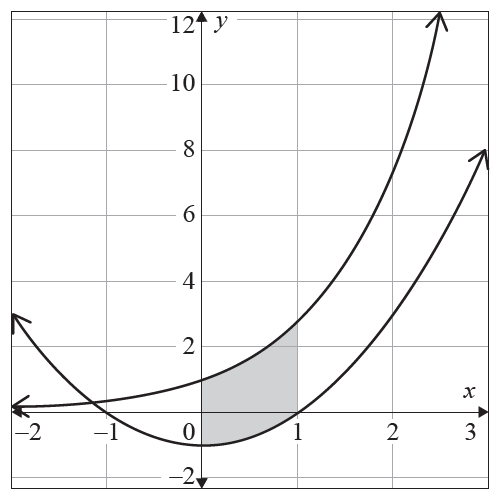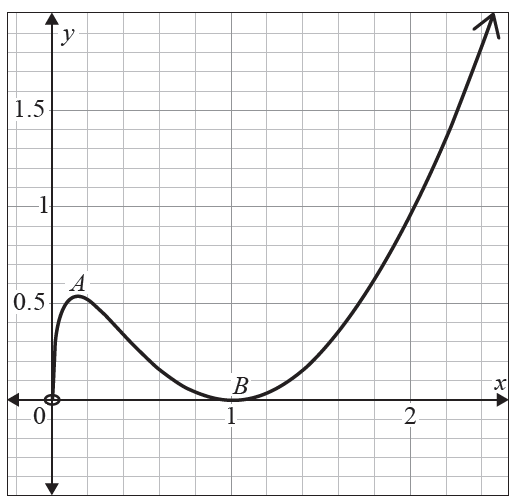2020 QCAA Maths Methods Paper 1 Mini Test 1
External Assessment Paper 1 — Technology-free
Number of marks: 10
Perusal time: 1 minute
Writing time: 15 minutes
Section 1
Instructions
• This section has 10 questions and is worth 10 marks.
• Use a 2B pencil to fill in the A, B, C or D answer bubble completely.
• Choose the best answer for Questions 1 10.
• If you change your mind or make a mistake, use an eraser to remove your response and fill in the new answer bubble completely.
The graphs of \(f(x) = e^x\) and \(g(x) = x^2 - 1\) are shown.

The area of the shaded section bounded by these graphs between the lines \(x = 0\) and \(x = 1\) is
- (A) \(1-e\)
- (B) \(e-2\)
- (C) \(e - \frac{5}{3}\)
- (D) \(e - \frac{1}{3}\)
Determine \(\int \frac{e^x+1}{e^x}dx\)
- (A) \(x - e^{-x} + c\)
- (B) \(x + e^{-x} + c\)
- (C) \(1 + xe^{-x} + c\)
- (D) \(x + xe^{-x} + c\)
Determine \(2 \int (4x + 6)^3 dx\)
- (A) \(16(4x+6)^4 + c\)
- (B) \(8(4x+6)^4 + c\)
- (C) \(\frac{(4x+6)^4}{2} + c\)
- (D) \(\frac{(4x+6)^4}{8} + c\)
Section 2
Instructions
• Write using black or blue pen.
• Questions worth more than one mark require mathematical reasoning and/or working to be shown to support answers.
• If you need more space for a response, use the additional pages at the back of this book.
– On the additional pages, write the question number you are responding to.
– Cancel any incorrect response by ruling a single diagonal line through your work.
– Write the page number of your alternative/additional response, i.e. See page …
– If you do not do this, your original response will be marked.
• This section has nine questions and is worth 45 marks.
A function is defined as \(f(x) = x(\ln(x))^2, x > 0\).
The graph of the function is shown and has a local maximum at point \(A\) and a global minimum at point \(B\).
The derivative of the function is given by \(f'(x) = 2 \ln(x) + (\ln(x))^2, x > 0\).

a) Verify that there is a stationary point at \(x = 1\). [2 marks]
b) Determine the coordinates of \(A\). [3 marks]
c) The graph of the function has a point of inflection at \(x = e^p\).
Determine \(p\). [2 marks]
END OF PAPER


